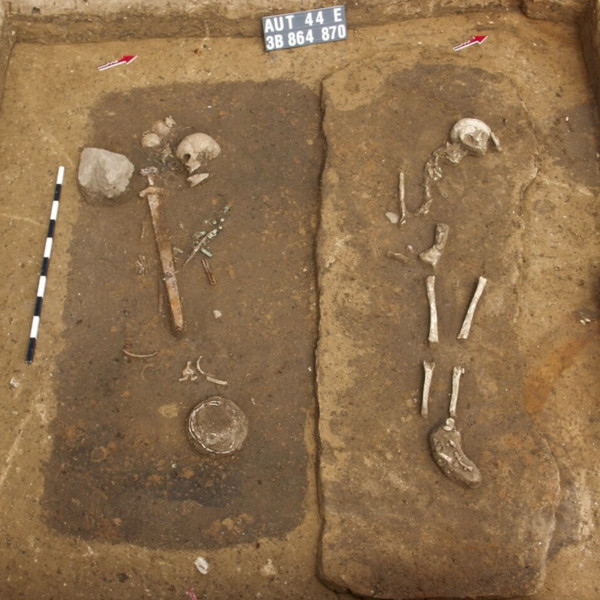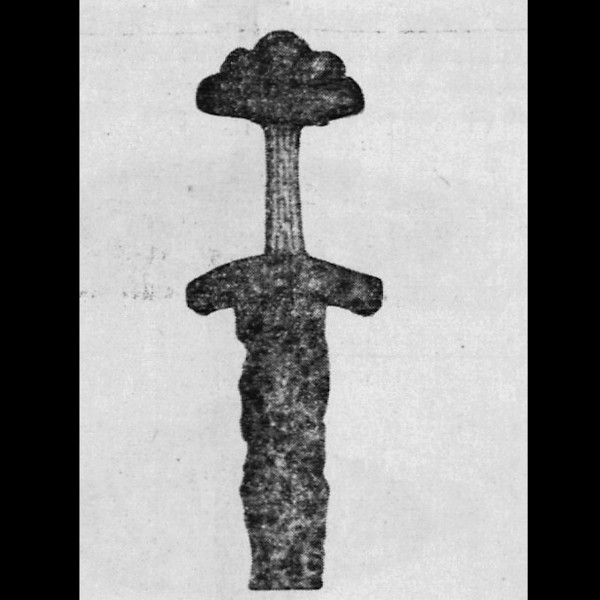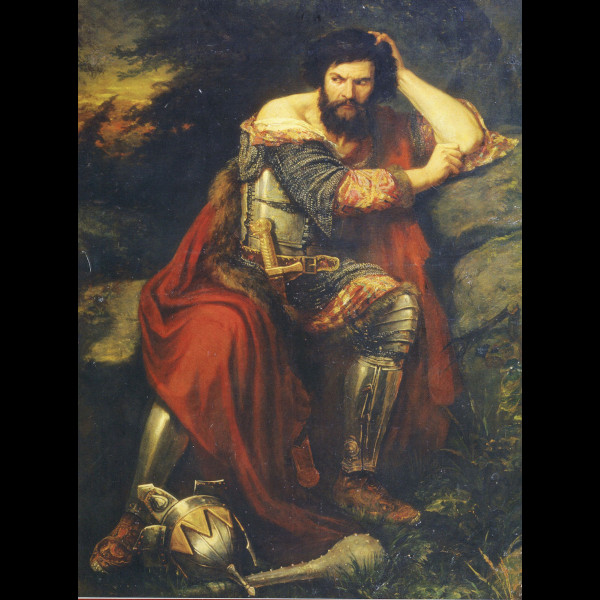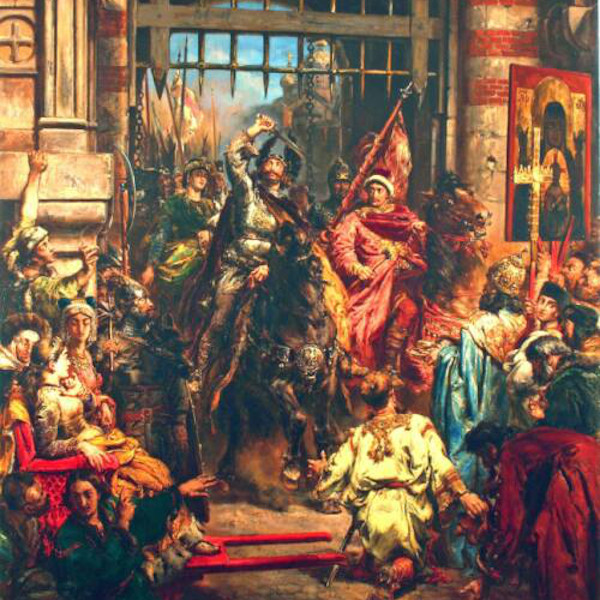DNA spotlight
Vikings of Bodzia

In central Poland near the Vistula river an incredible cemetery was uncovered in Bodzia and excavated between 2007-2009. More than 58 graves, weapons and riches were discovered with artifacts mostly of foreign origin. This chamber burial site was typical for the Viking Age and it is surmised this cemetery was part of a trade settlement connecting the Baltic Sea to the Byzantine Empire. The graves appear to have been surrounded by wooden palisades. Grave VK156 was found with a battle-knife, tools and an iron knife. His son VK153 meanwhile was buried with a battle axe. The richest grave however is shown here which contained a man and a woman who both died approximately the same time around 1015-1020 AD. The man on the left was buried with numerous items including an exquisite Viking sword.

The sword found here is classified as a Petersen Type Z sword with a distinctive five-lobed pommel and downturned spatulate guard. The find weighs about 855 grams with a length of 1 meter. It had a luxurious silver-encrusted hilt decorated in Scandinavian Mammen style with a riveted scabbard made of leather and wood. Further analysis of the materials and crafting showed the scabbard came from late 10th century Scandinavia. Similiar swords with the same design have only been found in Viking Sweden and Norway, although numerous Type Z swords have been found in Poland. He was also buried with a knife made of antler and iron bow shears. However, the most fascinating and explicit piece of evidence found is the man's bronze belt. This belt was engraved with a very specific emblem - a two-pronged mark topped by a cross.

This is the mark of the infamous Sviatopolk the Accursed (pictured here). Sviatopolk, of the Rurikid Dynasty, had died a violent death in his 30s in the year 1019. His father was Vladimir the Great of the Kievan Rus. Sviatopolk held the throne in the early 11th century and had his own brothers murdered to maintain his power. It is possible this grave belonged to a high-ranking member of Sviatopolks personal guard - or was even Sviatopolks himself. Tooth analysis showed the man in the grave was not local - and for this very rich and unique cemetery - his grave was the richest by far. Carbon dating of the body is almost an exact match for Sviatopolk and the man in the grave also had died of a violent death as sharp-edge mark trauma was found on the left parietal bone and left mandibular branch. Furthermore Sviatopolk had retreated from Kiev to Poland, the site of this grave, the year before being killed. Genetically this body exactly matches that of an early Kievan Rus Viking.

Sviatopolk was married to the daughter of Boneslaw I, the first King of Poland (seen here riding the horse on the left) and Emnilda of Lusatia a Polish noblewoman. The elite female grave is carbon dated to roughly 1020, corresponding to the death of Boneslaws daughter. She was buried with a whorls made of beautiful Volhynian slate. However most unique is the fact a stone had been placed over her face immobilizing her head. This exceptional act would protect the living from the return of the unwanted dead - and would be used to incapacitate the dead who were thought to be vampires. This ritual was known to be done to those considered dangerous during their lifetime. Also found in her grave was a coin minted from Viking Sigtuna circa 1017 with the image of Cnut the Great - Viking ruler of England Denmark and Norway. Other than her rich burial goods and correct age, the woman genetically matches the expected profile of Sviatopolks wife. Given the evidence, it seems quite plausible this double grave did indeed belong to Sviatopolk and his wife.
Sample: Viking Age Elite Warrior Bodzia Poland
- Sample ID: VK157
- Year: 1015 AD
- Sex: Male
- Location: 52.7,18.9
Sample: Viking Age Elite Woman Bodzia Poland
- Sample ID: VK155
- Year: 1020 AD
- Sex: Female
- Location: 52.7,18.9
Sample: Viking Age Axe Warrior Bodzia Poland
- Sample ID: VK153
- Year: 997 AD
- Sex: Male
- Location: 52.7,18.9
Sample: Viking Age Burial Bodzia Poland
- Sample ID: VK154
- Year: 1008 AD
- Sex: Female
- Location: 52.7,18.9
Sample: Viking Age Warrior Bodzia Poland
- Sample ID: VK156
- Year: 950 AD
- Sex: Male
- Location: 52.7,18.9



